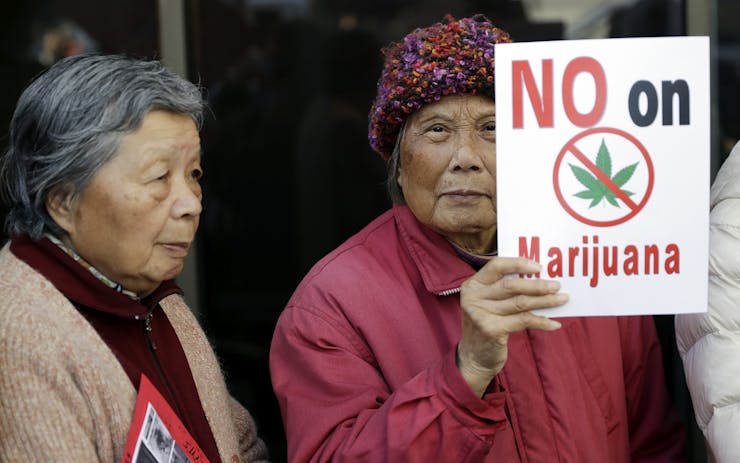A new Arcview/BDS Analytics report on the California cannabis market dropped this morning, and it contains some compelling information on the world’s largest single-state market–including an alarming illustration of the state’s NIMBY prohibition problem.
A new report projects $3.7 billion in legal sales in 2018. But too many customers are still shut out by local bans.
In their California: The Golden Opportunity briefing paper, Arcview’s market researchers estimate that California consumers will spend $9.2 billion on cannabis products in 2018. Of that, they estimate, $3.7 billion will be spent in legal channels.
Looking toward the horizon, the report estimates that California’s combined legal medical and adult-use sales will top $7.7 billion in 2021. “That sounds like a lot of growth, and it is, but the forecast is conservative compared to the post-adult-use legalization growth seen in other states,” say the report’s authors.
One graphic struck us as especially telling. Most in the cannabis industry are aware of the NIMBY prohibition problem: When states legalize the adult use of cannabis, many counties and smaller municipalities effectively extend prohibition by banning all cannabis companies. That form of local control is allowed under most state adult-use laws.
Here’s one snapshot of California’s NIMBY problem:
California Cannabis: Allowed, Limited, Prohibited
Little Overlap With 2016 Vote
There are some caveats here. A “county ban” does not mean all cannabis companies are banned within the county lines. In most cases a county ban means that cannabis companies are banned in unincorporated areas within the county. Incorporated cities can set their own rules.
In Orange County, for example, the city of Santa Ana allows the retail sale of adult-use cannabis. Similarly, Los Angeles County is working out its cannabis policy, but many legal adult-use stores are licensed and operating in cities like Los Angeles and West Hollywood.
Still, it’s kind of a shocking map. Cannabis prohibition effectively continues in massive portions of California. And those bans don’t neatly overlap with the results of California’s 2016 legalization vote, mapped below.
Check out Del Norte County, in the state’s upper northwest corner. Legalization passed with nearly 60% of the vote there. Yet last week the county board of supervisors voted to make a temporary cannabis ban permanent.
Local Control, Local Prohibition
This issue of local control has ripped open passionate divisions in some counties, most notably Calaveras County. In that rural district, county leaders first legalized and embraced cannabis farming, only to turn and outlaw it after farmers had invested millions of dollars into grow operations.
Local authorities often know little about cannabis, so they grab the easiest option: an outright ban.
In many cases, rural county supervisors have been left to craft complex policy on an issue about which they know little to nothing. So they default to the easiest option, which is an outright ban. Quotes in the Del Norte Triplicate newspaper indicate that residents and county electeds were asking the most basic questions about cannabis before last week’s vote. “Resident Victoria Dickie asked if anyone in county government had contacted federal authorities regarding cannabis legalization and the federal position on the legality of marijuana use and commercialization,” wrote Triplicate reporter Tony Reed.
That may seem laughably ignorant to those of us in the cannabis world, but this is too often the reality out there in non-urban districts. Even the county attorney seems to be catching up on the situation. “There’s no mechanism for the federal government to give us some kind of protection for our cannabis growers,” said County Attorney Joel Campbell-Blair at last week’s Del Norte meeting.
Well, of course not. No county, anywhere, has received federal protection or assurance for local cannabis growers. And yet it hasn’t deterred dozens of counties in legal states from allowing cannabis farms.
Fortunately, Del Norte County does have a Cannabis Working Group considering the issue, and that group may eventually come up with a plan to bust the county ban. In the meantime, two local citizens, Linda Sutter and Naomi Chelgren, have filed a notice to circulate a petition with the Del Norte County Clerk. That petition would place an initiative ordinance on the Nov. 2018 ballot, allowing for the regulated distribution and sale of cannabis within the county.
For more information on local municipal bans and the movement to overturn them, check out Leafly’s previous article on the subject here.






